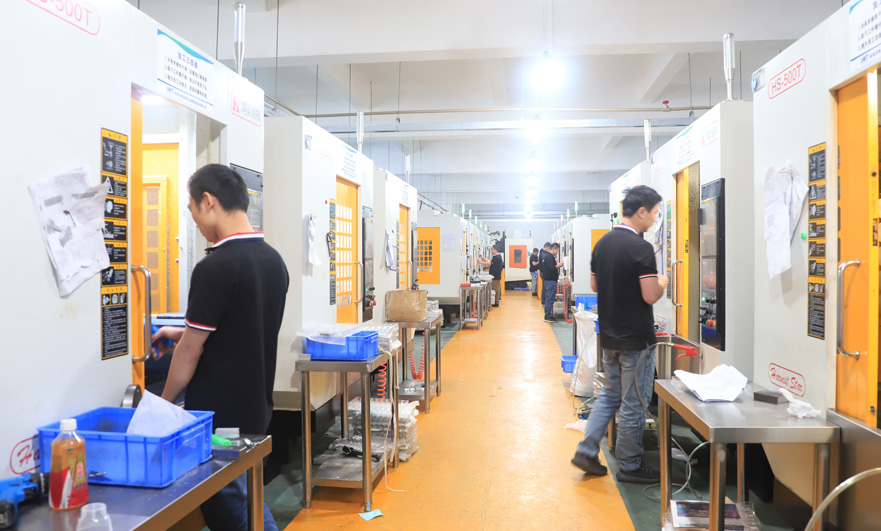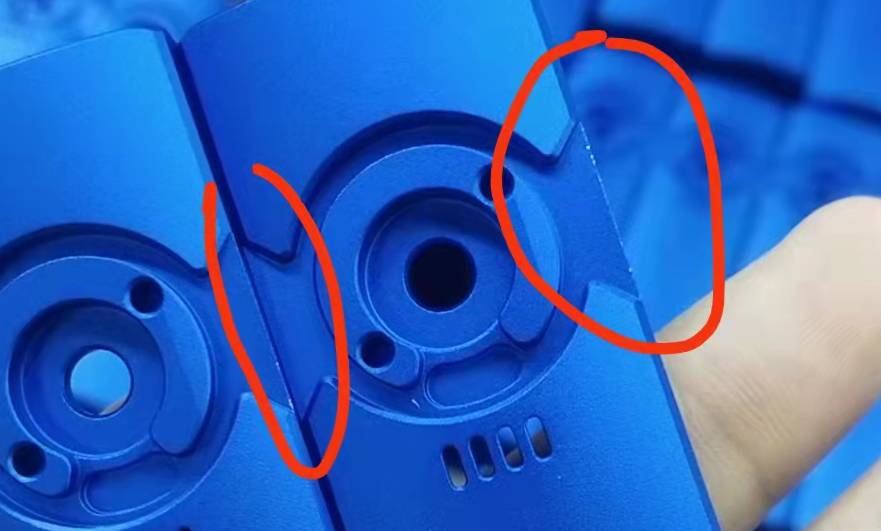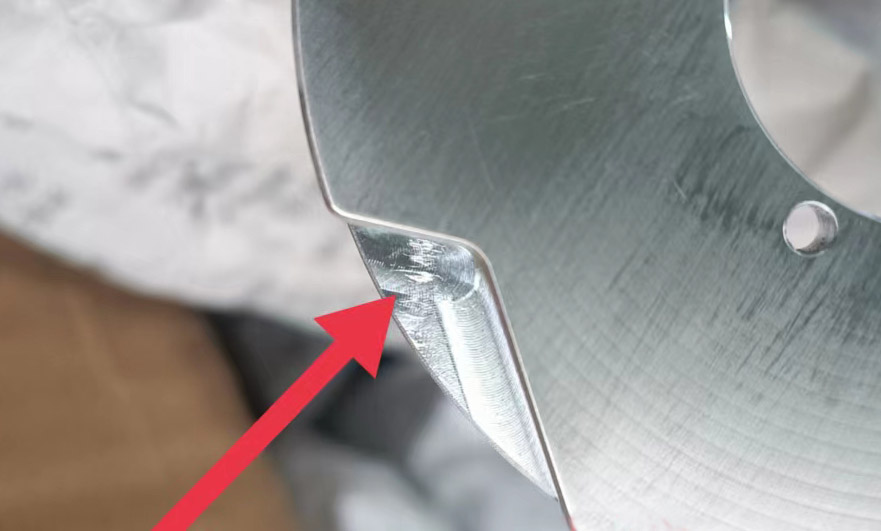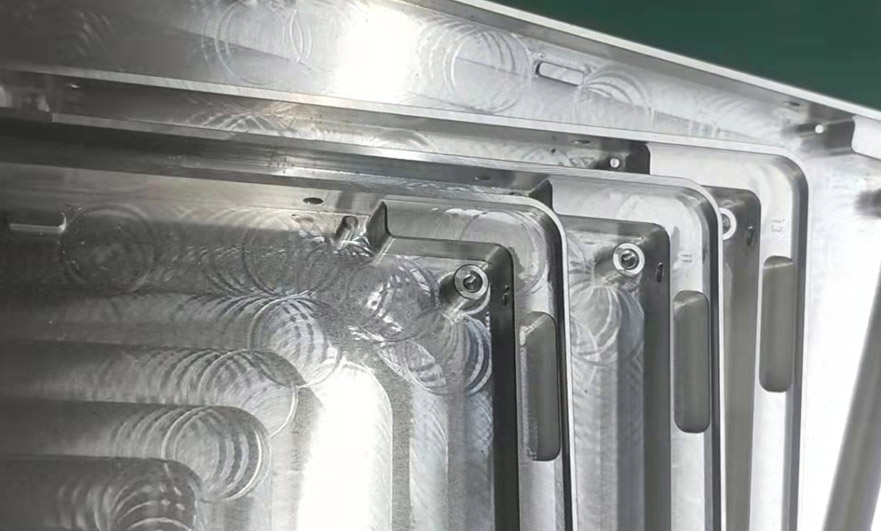15 years one-stop China custom CNC machining parts factory

Hey there I’m VMT Sam!
With 25 years of CNC machining experience we are committed to helping clients overcome 10000 complex part-processing challenges all to contribute to a better life through intelligent manufacturing. Contact us now
 604 |
Published by VMT at Sep 27 2022
604 |
Published by VMT at Sep 27 2022
In metal CNC machining, surface roughness defects seriously affect the quality of metal CNC machining, and the mechanism of surface roughness defects and the methods of eliminating roughness defects in various aspects are worthy of our in-depth study and continuous improvement.
Surface roughness is a standard for measuring the surface quality of CNC machined parts, and it has varying degrees of influence on the beauty of CNC machined parts, the friction of contact surfaces, the sealing of mating surfaces, and the fatigue strength of rotating parts. In the process of designing and manufacturing CNC machined parts, it is necessary to determine and ensure the surface roughness of CNC machined parts.
However, in the actual metal CNC machining process, the surface roughness of the parts will be defective due to various reasons such as tools, technology, lubrication, etc. The roughness of the parts may not meet the requirements, which may lead to the scrapping of the parts, so the roughness of the CNC machined parts must be Defects to carry out the corresponding elimination method research.

Reasons and Solutions for Surface Roughness Defects of Common CNC Machining Parts
1. Reasons for rough knife marks
The roughness of the tool marks is generally reflected in the increase of the cutting feed, mainly because during the cutting process, the metal CNC machined surface part of the metal is not removed due to the shape of the tool, and remains on the CNC machined surface, called tool marks.
Solution
First of all, when cutting, a smaller feed rate within the allowable range should be selected, but the feed rate should not be too small, otherwise it will also affect the roughness of the cutting. Secondly, when sharpening the tool, it is necessary to appropriately increase the radius of the tool nose arc within the allowable range, which will be beneficial to the roughness.
Generally, when the cutting speed is low, and high-speed steel or cemented carbide tools are used to cut plastic metal materials, scaly cracks and burrs are prone to appear on the surface, which is called the scaly phenomenon. Generally, this situation is prone to occur in CNC machining processes such as broaching, plunging, and gear hobbing. When cutting plastic materials with low-speed, small rake angle tools, chips will be squeezed, which will cause the force between the tool and the chips to change periodically, which will cause metal to accumulate and the CNC machined surface to appear. Fractures and scales.
Solution
The first is to control the cutting speed. The generation of the scaly phenomenon is due to the cutting speed to a certain extent. Above or below a certain speed range, the scaly phenomenon will occur. The second is the cutting thickness. It is necessary to reduce the cutting thickness as much as possible. The increase of the cutting thickness will increase the pressure between the chip and the front of the tool. If the chip is squeezed or the unit chip is formed, the scale phenomenon will appear more. Frequent and severe. In addition, the use of cutting fluid with better quality can also effectively inhibit the occurrence of scales. Reasonable selection of the angle of the tool is also an effective method to eliminate the phenomenon of scales. Finally, the machinability of the workpiece material should be continuously improved. For example, in some cases, the material can be heat-treated before cutting, so that the scale phenomenon will also be reduced.

3. Scratching and pulling
Scratches and burrs are also common in the category of roughness defects. The gnawing phenomenon during the CNC machining of gears, the burrs during grinding, etc. are all representative phenomena of scratches and burrs. And we can analyze their causes according to the scratches and scratches, in order to formulate elimination measures.
Solution
If the traces of scratches and scratches are distributed regularly, it is generally due to a problem with the machine tool. In the machine tool, such as the spindle box, slide box, feed box and other traditional systems, the shaft is bent, the gear teeth are poorly meshed or damaged, and regular scratches will appear. and hair pulling, so it is necessary to check the machine tool regularly and carry out frequent maintenance.
If the distribution of scratches and lint marks is irregular, it may be related to chips, tools, and cutting fluid. For example, in the process of deep hole CNC machining, poor chip evacuation will cause scratches on the inner surface. The surface roughness of CNC machined parts is generally caused by the falling off of abrasive particles and debris during the grinding process. It may also be that the grinding wheel is not suitable and the cutting fluid is not clean. Therefore, it is necessary to choose the appropriate grinding wheel and clean cutting fluid.

4. The knife is uneven
The main reason for the uneven knife pattern is the machine tool, which is mainly manifested by the uneven cutting marks of the tool on the metal handed surface.
Solution
There are many reasons for uneven knife pattern, but a common one is that when grinding the outer circle, there will be spiral linear marks on the surface of CNC machined parts. This is caused by the large straightness error of the grinding wheel busbar, which requires us to do a good job in the selection and maintenance of the grinding wheel regularly. In addition, for example, the crawling of the machine tool table or the tool rest will also cause uneven tool movement. Therefore, the overhaul and maintenance of the machine tool must be done in place to prevent and avoid it to the greatest extent.
5. High frequency vibration pattern
In the process of metal CNC machining, the entire process system will vibrate accordingly, and the machine tool, tool, and workpiece will have a great impact on the surface roughness of metal CNC machining parts. Among them, the low-frequency vibration of the process system generally produces waviness on the surface of CNC machined parts, while the vibration pattern generated by the high-frequency vibration of the process system belongs to the category of roughness. The vibration of the process system mainly includes forced vibration and self-excited vibration. Forced vibration is the vibration produced by the action of periodic external force. Self-excited vibration is the vibration excited by the system motion itself, and the most common self-excited vibration is cutting self-excited vibration.

Solution
The main method to eliminate high frequency vibration pattern is to find the vibration source, eliminate the vibration, or reduce the vibration to the allowable range.
For example, the vibration caused by the unbalanced rotation of CNC machining parts, the vibration caused by the machine tool transmission system, etc., are all forced vibrations. By finding the vibration source, adjusting and repairing the machine tool, the influence of vibration can generally be eliminated, and at the same time Vibration marks will also disappear. If it is cutting natural vibration, this kind of movement exists in the whole cutting process, which requires adjustment of the entire process system of the machine tool, tool and workpiece, such as changing the cutting amount, reasonably selecting the geometric parameters of the tool, and reasonably clamping Cutting tools and CNC machining parts, adjusting machine tool clearance, improving machine tool vibration resistance, etc.
Through the research and analysis of the surface roughness defects of CNC machined parts, find out the factors that affect the surface roughness in cutting, and find out the corresponding measures and elimination methods. When there is a problem, it is possible to find the cause of the problem in a timely and accurate manner, and solve it in time, which has practical significance for improving the quality of CNC machined products and promoting interchangeable production.
The above is just the opinion of the VMT CNC machining factory, if you have a better one, you can contact us: inquiry@vimetal.com.cn to discuss with us.
Ready To Start Your Next Project?
Get Instant Quote

Request a Free Quote
Send us a message if you have any questions or request a quote. We will get back to you ASAP!
